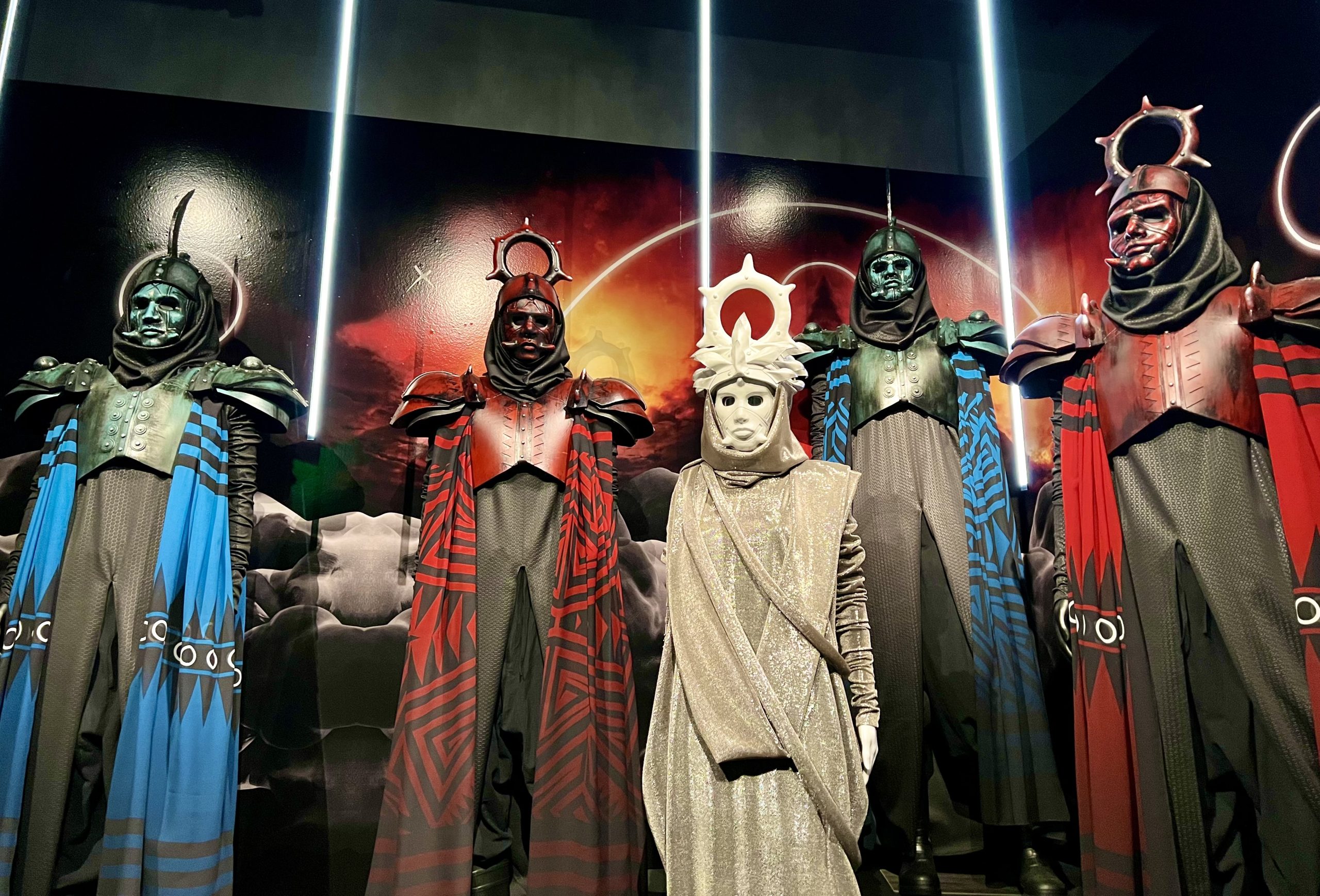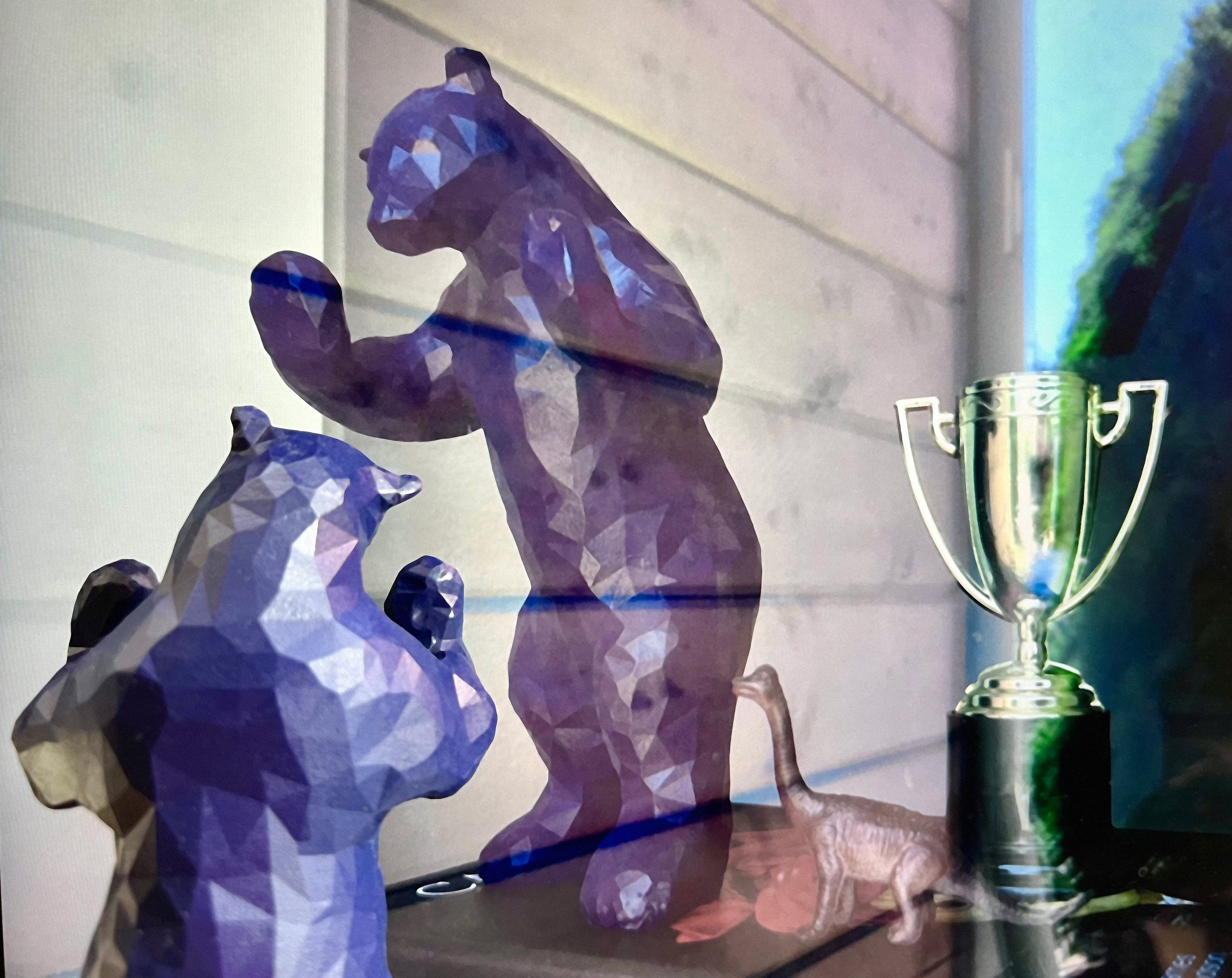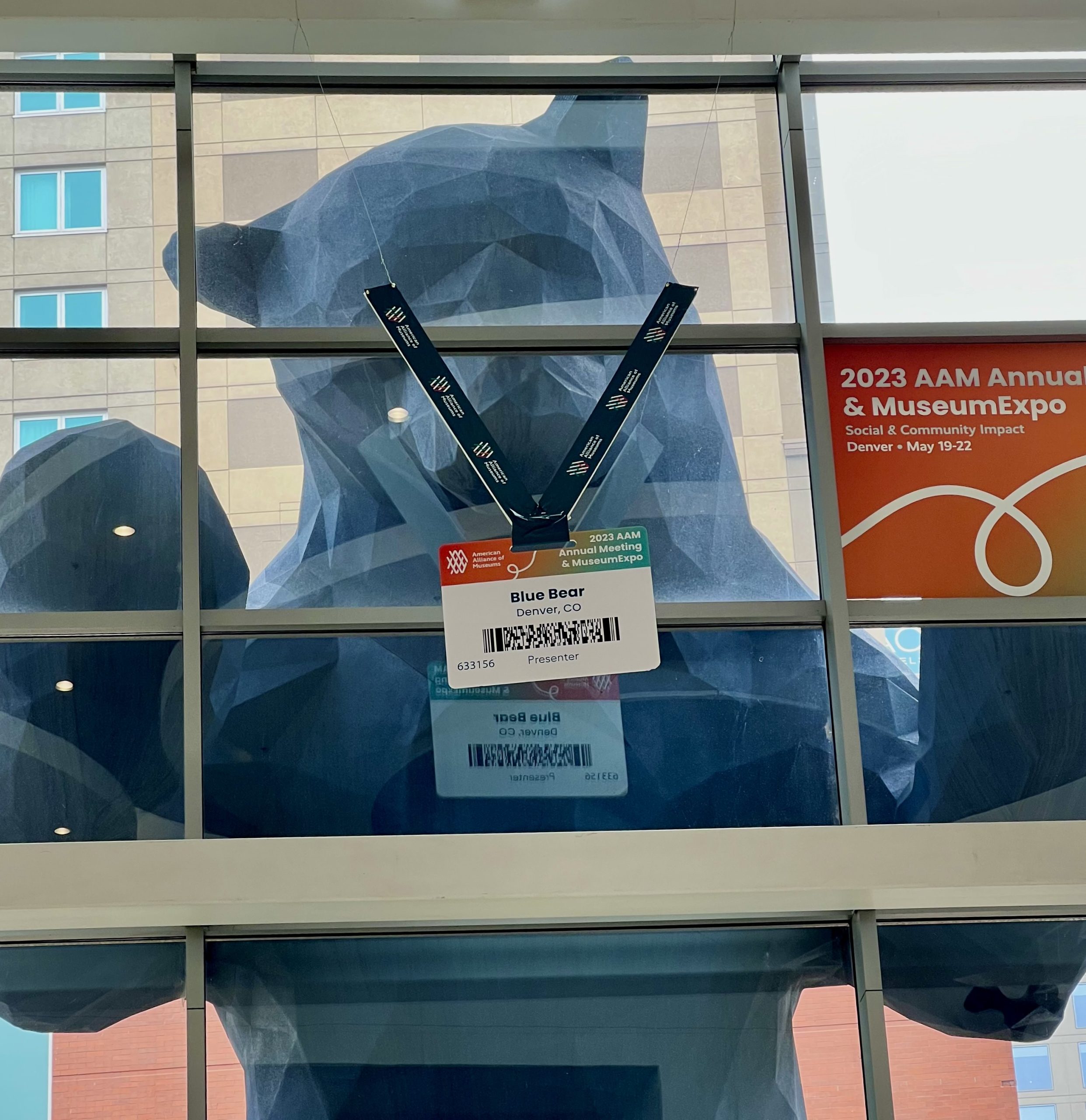The following is written from indelible memories rather than notes. It is a small fraction of my experience from four emotion-filled days in Denver attending AAM 2023.
2019 in New Orleans was my last in-person AAM conference. This seems long ago, but I remember key moments from that experience: Meeting Jane Boddie at Evergreen Plantation and Sorapuru Homestead, taking in her vivid thesis of economic exploitation that was baked into the American slave economy. Talking about it with Ellen Owens (then at the Penn Museum) afterward, to help me process the content, as we walked among the slave quarters on the plantation.
Here we all are, 4,000 of us gathered four years later, and I am filled with a sense of urgency and longing that was missing for me in 2019. Every hug I give and receive in Denver is more precious and heartfelt—as if given and received in the unspoken knowledge that it could be our last. Indeed for some, the hug from a memorable moment in a past AAM was just that. The intervening years have changed me, made me less careless with relationships—even those of a kind that only happen at museum conferences.
I no longer waste hugs. They are not perfunctory. They are deeply felt as a marker of our momentarily overlapping life journeys.
AAM 2023 starts for me, fittingly, with Adam (and my co-pilot for this conference, Joyce Kwon). Adam Rozan gives big hugs. Our first AAM together was 2012 in Minneapolis, but our conversations this time are not just about work. They touch all of it. The artificial separation between work and life seems quaint now. More on Adam and the Museum Marketing, Communications, and Audience Engagement Glossary here.
I am a business person, but I do not come to AAM to do business. I have always come to learn and to make friends. Sometimes it leads to business. In recent years, I also come to see old friends.
Moments
For me, some moments in Denver are electric. Some are devastating. Some can only be described as magical. All of them are unplanned, at least by me. All took place on a stage set by AAM and the city of Denver.
Before the conference starts, Adam gives me a mini gold trophy and a heartfelt note saying that our work together over the last three years on the Museum Glossary was a personal lifeline for him. Big hug.
Jo Tiongson-Perez (Penn Museum)—who is always the sharpest analytical mind in the room—reminds me of my Buddhism practice and its unanalyzed influence on my life and my choices.
Maggie Holcomb (The Field Museum), reports back to me at the closing party that our spontaneous conversation over breakfast was—along with the session on journey mapping—a highlight of the conference for her.
Laura Lott, current president of AAM, shares her wonder at the Virgil Ortiz Revolt 1680/2180: Runners + Gliders exhibition with her daughter, who is now almost as tall as she is, highlighting the passage of time from the photo showing “the rest of the story,” and reminding me that our whole selves matter and that every moment shared with loved ones is precious.
Ford Bell, president of AAM until 2015, when asked about the foresight in recommending Laura Lott to be his successor, takes no credit for himself. I see openness, kindness, and bottomless humility.
An evening spent with Deborah Ziska, whom I first met at AAM 2014 in Seattle when she was at the National Gallery of Art, partying like kids at Denver’s remarkable Children’s Museum, where CEO Mike Yankovitch runs a genuine learning organization of the kind that would make Peter Senge and Amy Edmondson very proud. Bravo.
Continuing at the Children’s Museum, I see Arthur G. Affleck, III (Association of Children’s Museums) emerge from Adventure Forest looking alive and open to the world. He smiles and makes me restate my ideas for his grant proposal. He records my less eloquent second version on his iPhone and we have a ten-minute flow state together before moving on, both imperceptibly better for having had this inaugural conversation.
Later that night I see Bob Beatty (Lyndhurst Group), whom I met at AAM 2015 only to become friends after a 15-minute bus ride from the convention center to an evening event, and whose testimonial for Cinnamon Catlin-Legutko, advocate for the decolonization of museums, at the opening ceremony prompted a spontaneous text exchange between us that reveals to me that he will be in Denver just for one evening. I am thus able to see him and share in the love and the boisterously hilarious remembrances of Cinnamon’s willfully meaningful life. Bear hug.
The magic is to be found *in between.*
You may notice that I am not talking so much about the conference sessions. They are important, of course, and I always learn something profound, but the moments of connection and kindness are mostly to be had in the many interstitial and unplanned moments. The magic is to be found in between, like when I’m lost in a back hallway and run into Kathy Greif (The Dali Museum). A blithe quip from me is met in kind and this chance encounter turns into a rich three-hour conversation over lunch. Hugs next time we meet at some future conference. Everything will have by then moved on from where it is now, but our paths are now touched because I was brave enough to say hello and she was open enough to let that spark a conversation.
Later that day, James Merle Thomas (Helen Frankenthaler Foundation) pulls me and a talented young scientist out of the noise of the closing party so that we can have a leisurely conversation, part of which is devoted to gentle mentoring. I assume the two of them have known each other for years, but we have all just met.
Hussein Hallak, David Meyer (Akta Lakota Museum), Rama Ibrahim, and I meet at the conclusion of the last conference session, and we decide that our conversation should continue over drinks. We talk about the cutting edge of community and of technology for museums that is at the heart of Hussein’s business venture, Momentable, which he explains as a kind of “Netflix for art collectors.” The real heart of our hours-long conversation, though, is exploring the nature of human bias.
He tells his story of growing up under the totalitarian elder Assad regime in Syria, being part of mandatory indoctrination as students in the “National Identity” curriculum. So that while on one level—due to Islam’s tradition of respect for the sciences—he saw little interference with decisions made between a doctor and their patients, for example, on another level, he was fed an anti-semitic worldview. In the years since, his love of science and the scientific process has helped him work to dismantle this indoctrination and start to develop his own opinions and thoughts, especially as he traveled around the world and was exposed to a broader range of people and ideas.
We are both working to unwrite a code we were given to interpret the world. It’s a code rife with bias and fed by inadequate understanding.
This conversation—very inadequately captured here—reminds me of my own challenges at dismantling all the culturally inserted and now largely unconscious biases that I absorbed during my own childhood growing up in the United States, where we have our de facto version of a national identity curriculum. We are both working to unwrite a code we were given to interpret the world. It’s a code rife with bias and fed by inadequate understanding.
Enter Olivia VanDamme (California Academy of Sciences) who chooses to share my path at the conference for a couple of hours as well. In our conversation, I learn much more than I teach, I listen more than I talk. In those hours I get a glimpse of some of her dreams, her passions, and her personal and professional struggles. We are all multitudes. As the She Explores podcast episode “Student of the Sea” outlines, Olivia is an educator, a poet, a singer, an environmentalist, and a surfer. The California Academy of Sciences is very lucky indeed.
Transformative Conversation
Now it’s after midnight on the last day and everyone is turning in. I’m too worked up by the whole conference to want to sleep. It’s just me and Donna at the hotel bar with a big, untouched bowl of potato chips sitting in front of us. I say hello.
The door that Gregg Deal’s keynote address effectively cracks open in my mind, and that I had explored earlier that day with Hussein, David, and Rama, is now to be swung wide by Donna Chrisjohn (Chinook Fund & Denver American Indian Commission).
In the panel discussion after the conference keynote, we all heard John Luckavic, Curator of Native Arts at the Denver Art Museum, rather gently but effectively articulate the mental reset prompted by Gregg: “If you were to decide to throw a dinner party at your next door neighbor’s house, but don’t invite them, don’t include them in any of the planning of it, and just leave a mess after you are done. You wouldn’t do that.”
Reality is far more stark and cruel than this. My Tronvig (maternal) ancestors in South Dakota murdered Donna’s Lakota ancestors. Not figuratively or precisely, but very literally. I am the heir of an America that stole her ancestor’s land, collected her ancestor’s belongings, planned and carried out a genocide against her people and systematically tried to destroy her culture. Now, as we are having this conversation in 2023, her people’s most sacred possessions are still displayed as curiosities without context in some museums and her most private and cherished religious rites and rituals are rendered as caricatures in dioramas next to dinosaurs.
I am humbled by and deeply appreciative of what Donna takes the time to teach me, how she kindly answers my many questions. She does not have to do this. She might just as well have left me floundering in my ignorance and gone to bed at a reasonable hour. She does not. Instead she takes me on a journey, rich with stories and examples from her life and work with museums. Hours of her time given to me long after her day and its duties are officially done—we talk until past 3AM—and she does so out of sheer generosity for the benefit of a total stranger.
I am forever in her debt.
One big hug to AAM for making all of this possible in four short days each year.
There is so much more to write about this, but suffice it to say here that my heretofore nascent land acknowledgment has solidified, expanded, and gathered clarity in the light shined on my thinking because of this year’s AAM and a chance conversation with Donna:
I live on Munsee Lenape and Canarsie land in what is now Brooklyn, New York. The land I live on was stolen from these first people. My nation committed genocide while taking these lands and my ancestors directly aided that genocide in what is now South Dakota and possibly elsewhere.
(Look up the first people whose land you occupy: https://native-land.ca/)
I end where I began. Ellen Owens (Castellani Art Museum) gestures to me from across the room at the closing party. She strides over, hugs me, and gently reminds me of our time together in Louisiana at Evergreen Plantation. Our small walk on the journey for that particular moment, in that particular place, had our lives beautifully overlap.
More where that came from please.
One big hug to AAM for making all of this possible in four short days each year.
Coda

As we sit on the picnic tables outside, Katie Ross (Denver Art Museum), a rock solid and indefatigable contributor to the Museum Marketing, Communications, and Audience Engagement Glossary, bumps into us as she is getting lunch. It’s a perfect coda for a conference filled with fortuitous interactions and chance meetings. We talk of some of our key takeaways from the conference. Then, as the Denver sunshine warms our backs and we finish our food, our conversation flows into a more leisurely sharing of stories about parenting, and kids, and some of the other important stuff that makes us human.
Photos by the author except featured image, “Longing for a Bear Hug,” a collaboration between James Heaton and Joyce Kwon with special thanks to Kristy Bassuener of the Denver Art Museum for gifting each of us our very own blue bear.




This is such an incredibly powerful story! Thank you for sharing it. I had the good fortune of overseeing the AAM Annual Meeting & Museum for eighteen years. It transformed me similarly in immeasurable ways due to all the colleagues I have met and the generosity of their knowledge and kindness that taught me much about being human. I hope our paths cross next year at the annual meeting in Baltimore so I can connect you with some of the those people who made it so and widen your circle!
Dean, thank you for this kind note. I very much look forward to Baltimore.